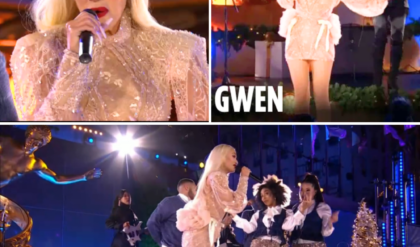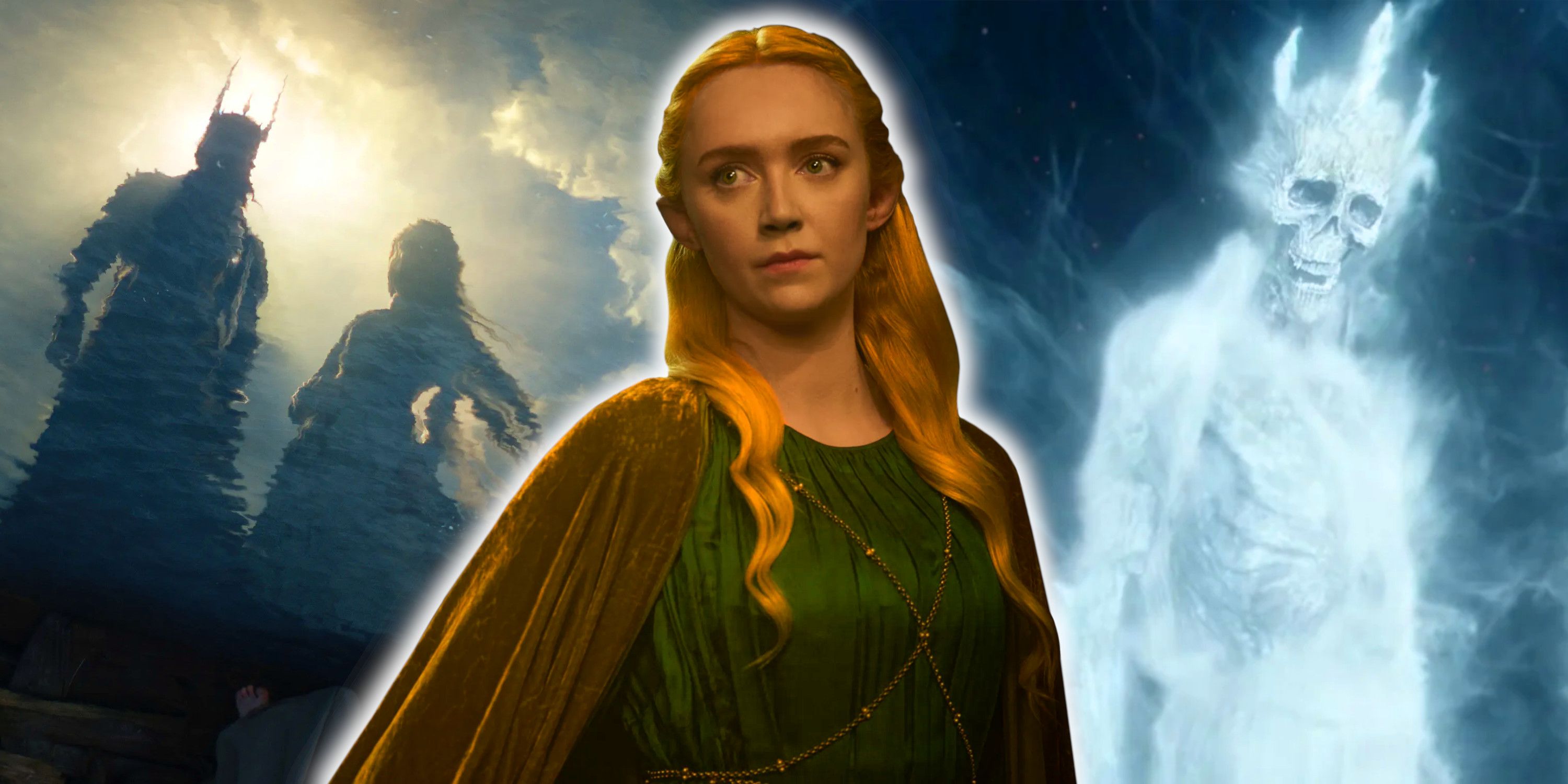
Prime Video’s The Lord of the Rings: The Rings of Power has begun to explore a fascinating aspect of J. R. R. Tolkien’s Middle-earth lore: the Unseen. It came up briefly in the first season, starting with the episode “Udûn.” When Galadriel interrogated Adar, he said, “The one you call Sauron… sought to craft a power not of the flesh but over the flesh. A power of the Unseen World.” Celebrimbor later used part of this same phrase, which was one of the reasons that Galadriel became suspicious of Halbrand. In the second season, the Unseen has become more prominent thanks to the titular Rings of Power. Galadriel and Gil-galad, the wearers of Nenya and Vilya, have received visions of the Unseen, giving them cryptic clues about the future.
These references to the Unseen came to a head in the most recent episode. Celebrimbor witnessed a scene of chaos unfolding in his workshop as Annatar and the Elven smiths tried to create the Nine Rings for the race of Men without his involvement. Their tools seemed to float through the air and violently throw themselves about the room. A massive hanging anvil fell from the ceiling, and the fires of the forge flared up. Celebrimbor eventually caught a hammer in midair and realized that an invisible person was holding it. Celebrimbor removed a Ring of Power from the unknown figure’s finger, revealing that it was Mirdania, one of the smiths. Annatar explained that she had been trying to resize the ring when she suddenly vanished into thin air.
The Unseen World Revealed Sauron’s True Nature
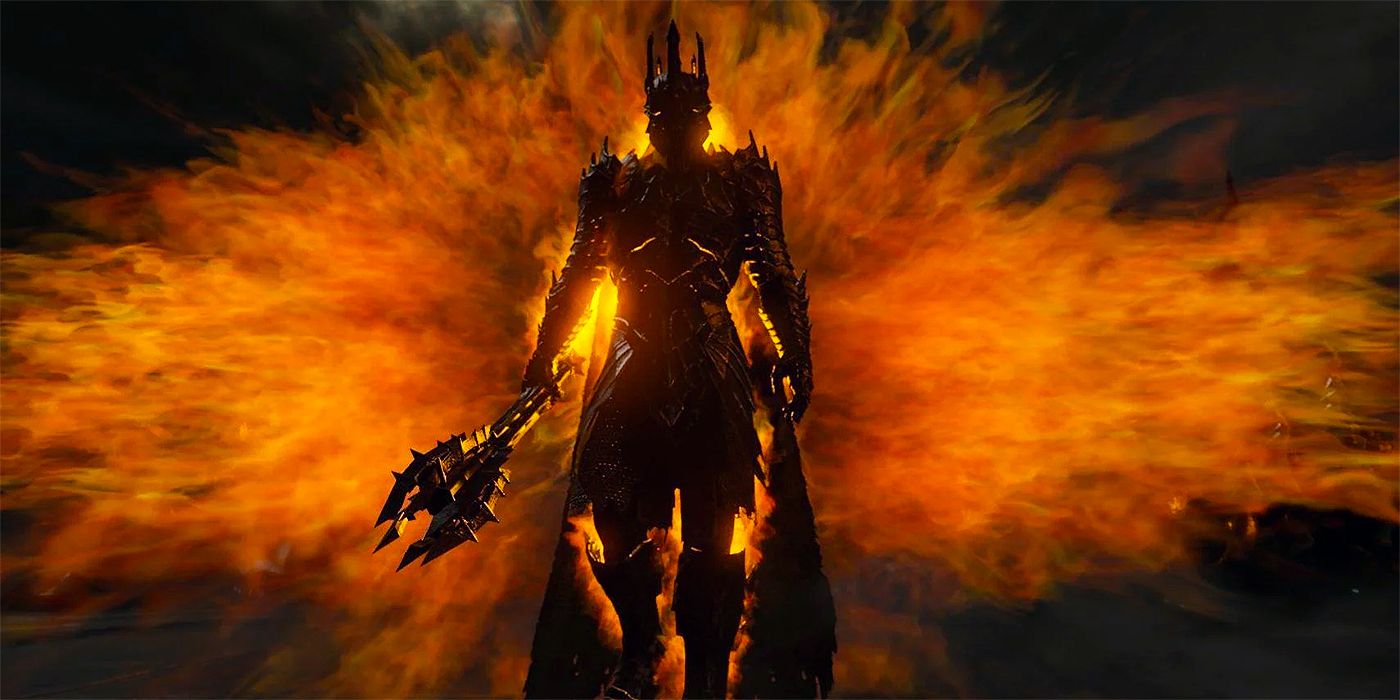
Mirdania was not a character from The Lord of the Rings novel, but her name likely came from mírdan, meaning “jewel-smith” in the Elvish language of Sindarin.
In The Silmarillion, the smiths who worked with Celebrimbor were called the Gwaith-i-Mírdain, meaning “People of the Jewel-smiths
When Mirdania became visible again, she was confused and horrified. She told Celebrimbor that she had just been in a haunting alternate version of the forge that was “shrouded in mist and darkness.” She had begun to stumble around the room after seeing a terrifying monster: “It was tall, and its skin was made of flames… reeking of death. And I saw its eyes, pitiless and eternal.” This must have been the true form of Annatar, who was secretly the Dark Lord Sauron. According to Mirdania, this strange effect of the Ring of Power was the result of adding extra mithril to the alloy in an attempt to combat Men’s natural vulnerability to corruption, which was the reason Celebrimbor had refused to help create the Nine Rings.
Later, Annatar privately explained to Mirdania what had happened. The Ring of Power had temporarily brought her into the Unseen World, a magical realm that overlapped with the Seen World and was usually imperceptible by mortals. He said, “Some who behold the Unseen World are never quite at home in this one again… In its light, things appear as they truly are: beings of different shades of light and darkness.” He claimed that the fiery monster Mirdania had seen was the soul of Celebrimbor, who was descending into madness because he was obsessed with creating the Rings of Power. This was yet another example of Sauron’s mastery of the arts of deceit and manipulation.
Some Characters Did Not Need Rings to Enter the Unseen World
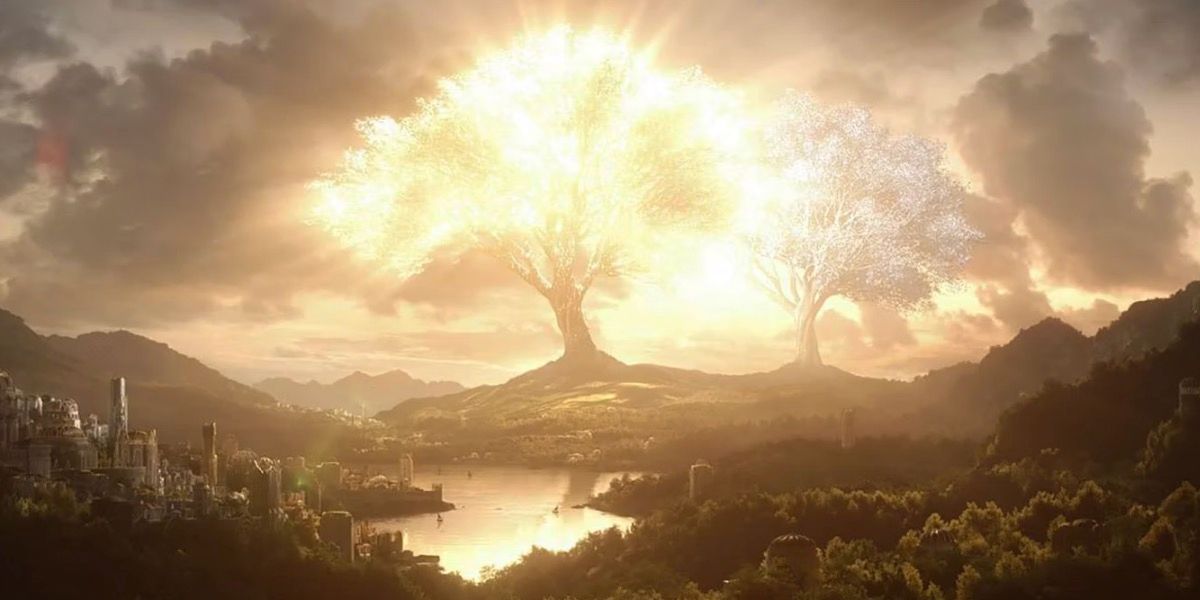
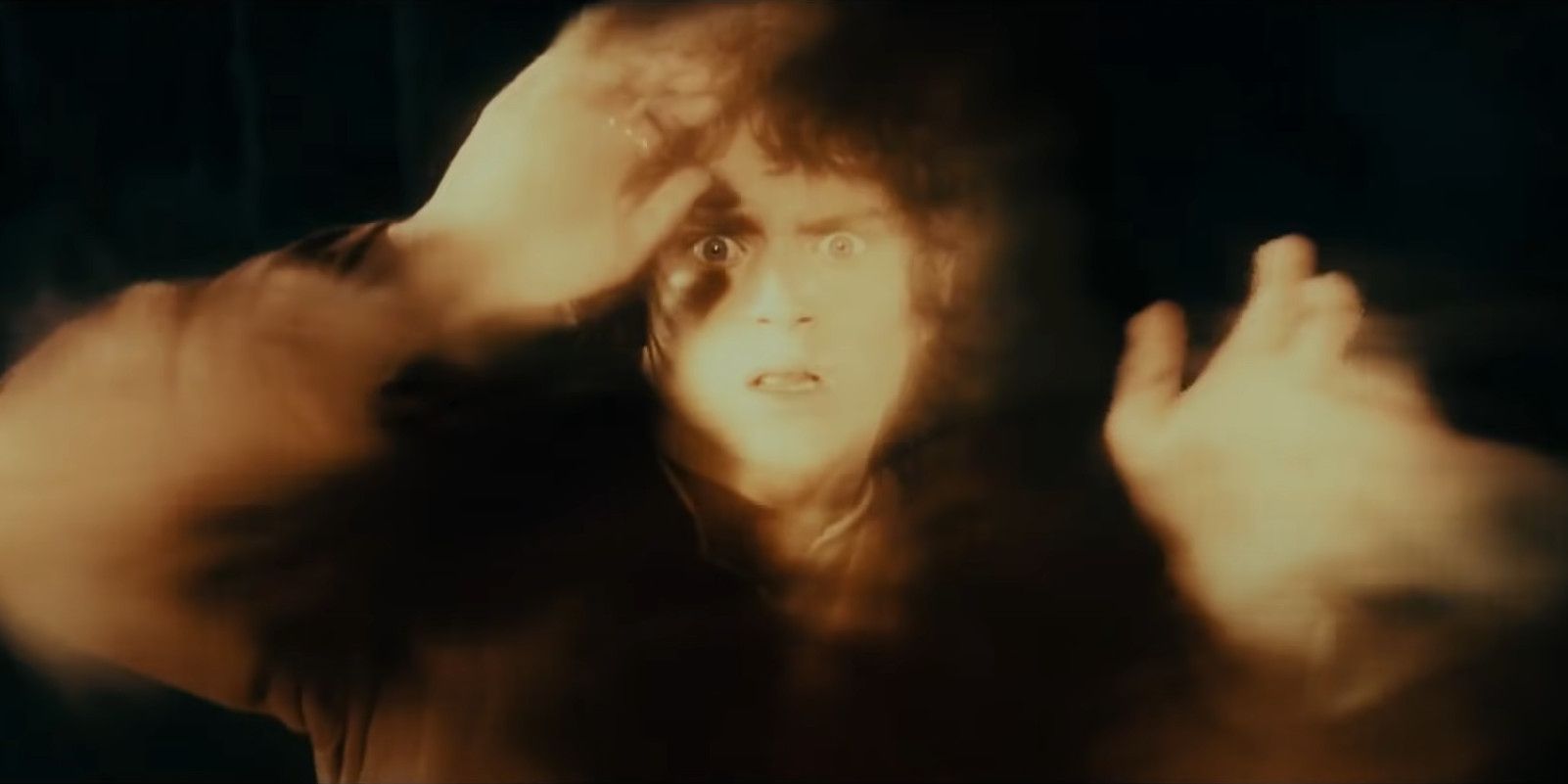
In Tolkien’s novels, some beings existed in both the Seen and Unseen Worlds simultaneously. This included Maiar such as Sauron and the Wizards; their true forms were those of divine spirits, but they created physical bodies so that they could interact with the world. Some Elves existed in both realms as well, specifically the Calaquendi, or Light Elves. These terms referred to those who had seen the light of the Two Trees of Valinor, which empowered their spirits. In the chapter “Many Meetings” from The Fellowship of the Ring, Gandalf tells Frodo, “Those who have dwelt in the Blessed Realm live at once in both worlds, and against both the Seen and the Unseen they have great power.” Meanwhile, some beings existed solely in the Unseen World and were therefore invisible to most. The clearest examples of this were the Nazgûl, or Ringwraiths, who needed to wear black cloaks to be perceptible by mortals. When Men or hobbits wore the Rings of Power, they entered the Wraith world, making them invisible to most and allowing them to see the Unseen. The same happened to victims of Morgul-wounds if they did not die outright.
Elves who had not seen the Two Trees of Valinor were instead called Moriquendi.
Tolkien did not make the distinction between the Wraith-world and the Unseen entirely clear — if indeed there was a distinction — but the former was seemingly a part of the latter. While the Unseen was a vague term that could refer to anything beyond mortal perception, the Wraith-world was specifically the ethereal realm that the Nazgûl inhabited, and it happened to be Unseen. The descriptions of the Unseen World that Mirdania and Annatar gave in The Rings of Power closely matched Tolkien’s from The Lord of the Rings. In the chapter “The Breaking of the Fellowship” from The Fellowship of the Ring, Frodo slipped the One Ring on his finger, and suddenly “he seemed to be in a world of mist in which there were only shadows.” Glorfindel, a mighty Elf and one of the Calaquendi, looked like a bright white light while Frodo was in the Wraith world.
The Rings of Power Changed the Lore of the Unseen World
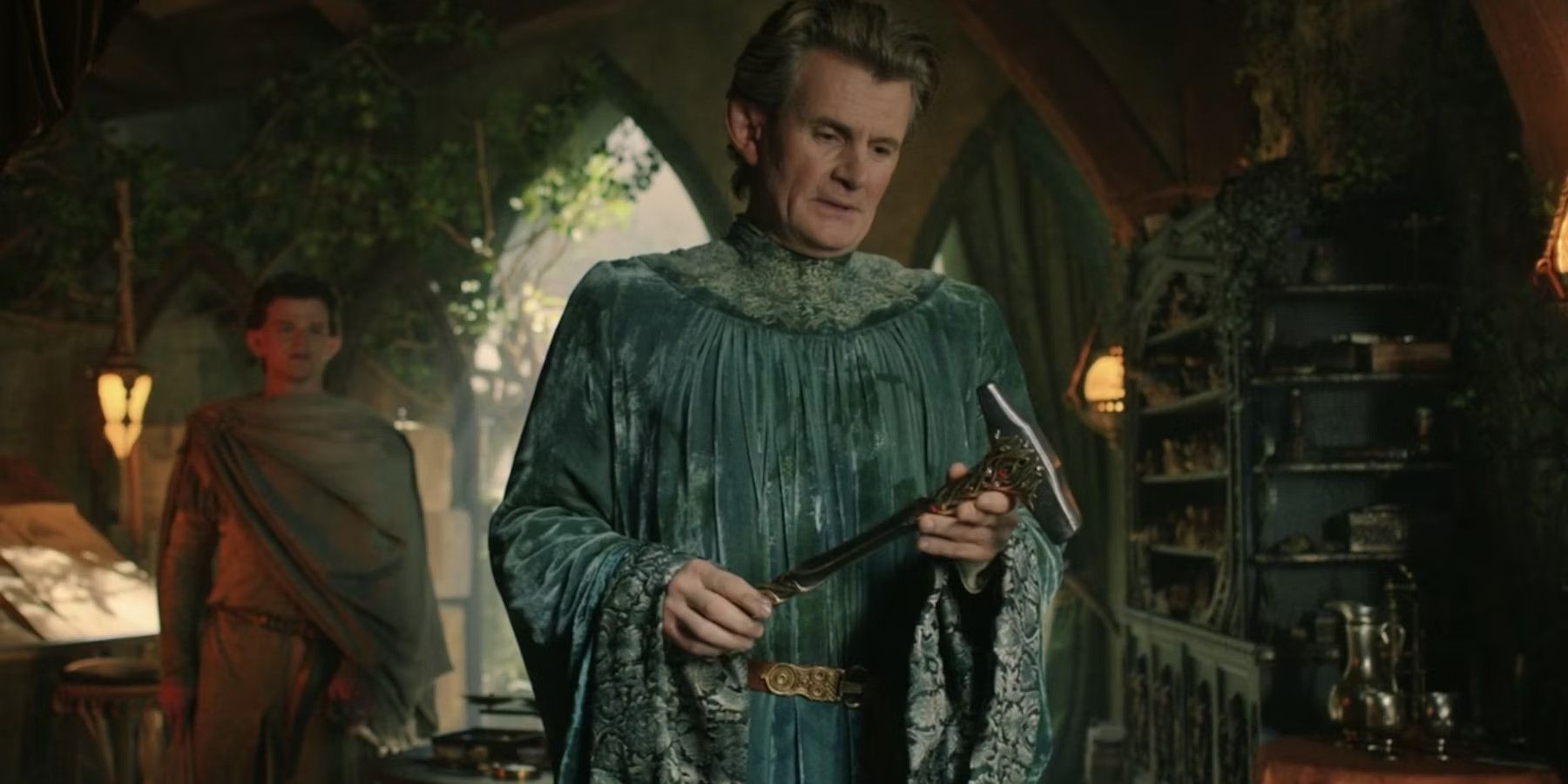
Major Calaquendi in The Rings of Power
Galadriel, Finrod, Celebrimbor
Major Moriquendi in The Rings of Power
Gil-galad, Elrond, Arondir, Círdan
The lore surrounding the Unseen in The Rings of Power did not entirely line up with Tolkien’s writings. Celebrimbor was one of the Calaquendi, as he was born in Valinor during the Years of the Trees. Therefore, Mirdania should not have appeared invisible to him. Likewise, Galadriel was also one of the Calaquendi, so she should have been able to perceive the Unseen even without a magic ring. Yet there is an explanation for this; in the episode “Where the Stars are Strange,” Gil-galad said that Nenya “kindled [Galadriel]’s ability to see that which has not yet come to pass.” As well as referencing the Mirror of Galadriel from The Lord of the Rings, this quote implied that the Rings of Power only enhanced the Elves’ natural connection to the Unseen World. Perhaps, in the series’ version of the lore, perceiving the Unseen is a skill that Calaquendi must practice and neither Celebrimbor nor Galadriel have done so.
Another difference in the series’ lore was the reason that the Rings of Power sent their wearers into the Wraith world. In the novel, mithril had nothing to do with this. There was no inherent difference between the Seven Rings that Sauron gave to Dwarves and the Nine Rings that he gave to Men; the only reason Dwarves remained visible while Men did not was that the Rings of Power did not affect Dwarves as greatly. However, mithril’s connection to invisibility makes sense given one of its other traits. Mithril was the main ingredient in ithildin, a magical material that was only visible under a certain condition, namely moonlight. The Doors of Durin, also known as the West gate of Moria, made use of ithildin.
The showrunners likely made these changes to the lore of the Rings of Power and the Unseen World to bring a familiar aspect of The Lord of the Rings to the series. Invisibility was a key part of The One Ring both in the novel and in Peter Jackson’s trilogy of film adaptations. Making Celebrimbor, Galadriel, and the other Calaquendi completely immune to this effect would have removed some of the Wraith-world’s mystique. Jackson’s films only hinted at the nature of the Unseen, but The Rings of Power‘s longer runtime means that it has an opportunity to more fully explore the concept, especially how it relates to Elves and Maiar. If Sauron distributes the Nine Rings and creates the Nazgûl at some point in this series, the Unseen World will surely be relevant once again.

